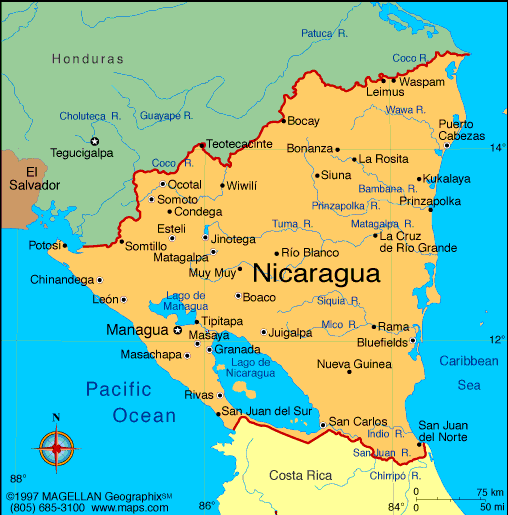Last week I traveled up to the small town of Tonalá, Chinandega for my volunteer visit. I was able to see what volunteer life is actually like.. training at times can feel a bit like a bubble, but I guess that’s why they call it training. I had the pleasure of staying with a volunteer named Laurel who built her own house out of plastic bottles! I know it’s crazy!
As a business volunteer, we will be teaching Entrepreneurship classes in public high schools. In addition to teaching in the immediate area, most volunteers also travel to very rural areas. On the way to the institute in Puerto Morazan the bus ride was bumpy but beautiful (they have one paved road in the area which was completed two years ago). Once in Puerto Morazan, we had to cross a bridge which just so happened to be out for the week. So, in Peace Corps fashion, we decided to scale the bridge to find half way through that they started painting the bridge. Walking through the village with green hands and feeling accomplished, we arrived at the school to find that many of the teachers hadn’t even showed up for class that day. If anything, this trip taught me about the importance of patience.
From the school, we walked about a mile and a half to a local shrimp cooperative made up of 16 women that was started about 20 years ago. For some reason, in my mind I’d always pictured a dark factory with dirty pools containing shrimp, and I’m not sure exactly where this image came from. However, I found serene “pilas” set amongst a backdrop of of volcanoes, greenery, and grass huts. So much care was taken in ensuring that the environment was natural and kept as clean as possible. I know that if I was a shrimp, I’d like to live there.
The co-op, along with 5 others, is currently under contract with a large Spanish seafood company, and there seem to be a number of other seafood processing companies in Chinandega. Laurel is working with the women as one of her secondary projects. They are creating a business plan so that they will at some point be able to be independent.
Lucky for me during my stay they were planning on harvesting the shrimp. We headed out (scaled the bridge again) and watched the harvest from 6 p.m. until 2:30 in the morning. We sat in silence amazed and watching every second. There was something really genuine about the process from the six light bulbs hanging on a string to provide light to the sound of the shrimp jumping inside the red plastic crates. During their eight and a half hours of work, the workers took one break for a piece of bread and cup of instant coffee. They would harvest for two more nights until the pilas were drained.
I’m trying to describe every detail because my camera (of course) quit working the same day. If only I could paint more than stick figures or blobs. My Dad had a “moose moment” when we were on a trip out west years ago. To this day he still regrets not having a camera. This might have to be my “moose moment”.
Following the conclusion of the harvest for the night, we made our way down stream in the pitch black. After dropping off the giant turquoise containers packed with ice and shrimp to the processing plant, we hitched a ride on a truck, and finally found ourselves hiking home from the front of town.








